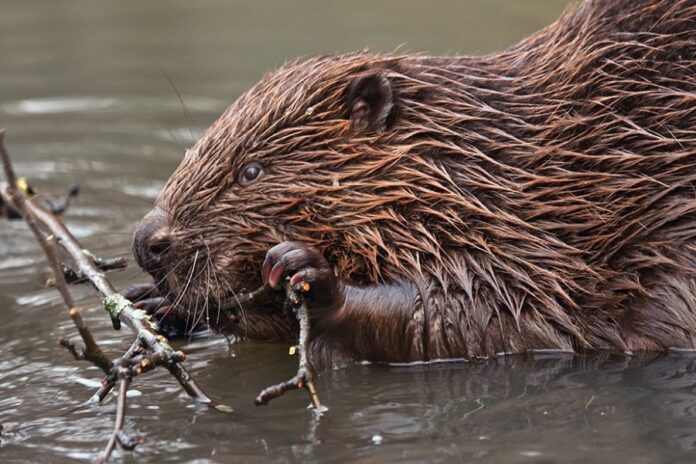
The Eurasian beaver (Castor fiber) or European beaver is one of the largest living rodent species and the largest rodent native to Eurasia. It is almost identical to it’s North American relative (Castor canadensis) in appearance and ecological impact, but is genetically distinct.
Once widespread in Eurasia, Castor fiber was hunted to near-extinction for both its fur and castoreum, a glandular secretion used in some foods, flavourings, liquor and perfume. Beavers are a strictly protected species in the European Union. At the beginning of the 20th century, they were considered extinct in large parts of Europe, including Lithuania.
It was only through reintroduction and protection that the population recovered.
 Now reintroduced to much of its former range, the species is known in Spain, Central Europe, Great Britain and Scandinavia, and to a few regions in China and Mongolia. It is listed as a species of least concern on the IUCN Red List, as it recovered well in most of Europe. According to the Ministry of the Environment, there are more than 47,000 beavers in Lithuania today.
Now reintroduced to much of its former range, the species is known in Spain, Central Europe, Great Britain and Scandinavia, and to a few regions in China and Mongolia. It is listed as a species of least concern on the IUCN Red List, as it recovered well in most of Europe. According to the Ministry of the Environment, there are more than 47,000 beavers in Lithuania today.
Beavers create wetlands with their dams and help increase biodiversity. However, they can also cause harm when they flood fields or forests. Lithuania is one of the few countries in the European Union where beaver hunting is permitted. This attracts tourists, from Germany for example, where it is banned. Lithuania has a higher population of beavers and many more open areas and hunting grounds. While German hunters are interested in the meat of the beaver, their primary interest lies in the fur. Beaver fur has excellent insulating properties.
Officially, hunting trips are not actively promoted as a tourist attraction in Lithuania. Accordingly, the national tourism promotion agency Lithuania Travel does not keep statistics on how many hunters come every year. But tour operators say they regularly send groups of hunters to Lithuania and the other Baltic states. Besides Germany, they come here from countries like Denmark, Poland, and the Czech Republic.
Lithuania is one of the few EU member states that have exemptions from the strict rules on beaver protection. Hunting is not restricted, and hunting clubs only have to report how many animals they want to shoot during a season.
Professor Alius Ulevičius, ecologist at Vilnius University, emphasizes how important beavers are for biodiversity: “The beaver is a so-called keystone species, it is an ecosystem engineer.”
Beaver dams create wetlands and habitats for many other animals, such as fish, amphibians, waterfowl, insects, and even other mammals. From an ecological point of view, there is no need to hunt beavers, the scientist says: “The beaver population in Lithuania is as it should be.”
But in other respects, a limit has been reached. Ulevičius speaks of “socio-economic capacity”, meaning that too many beavers are causing problems: they flood the land of farmers or forest owners.
In such conflict areas, he recommends regulating the population through hunting. In other areas, however, beavers should be protected, the ecologist says. “About 10 to 15 percent of beaver sites are very valuable and, in my opinion, beavers should be left for biodiversity and ecosystem infrastructure.”





























